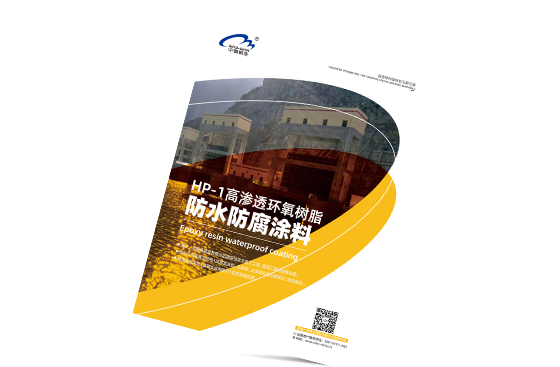Design Possibilities: Unleashing Creativity with Carbon Fiber Wrap on Concrete
Release Time:
2024-11-23 09:00
Design Possibilities: Unleashing Creativity with Carbon Fiber Wrap on Concrete
Table of Contents
- 1. Introduction: The New Era of Concrete Design
- 2. Understanding Carbon Fiber Wrap: An Overview
- 3. Benefits of Using Carbon Fiber Wrap on Concrete
- 4. Creative Applications of Carbon Fiber Wrap
- 5. Application Techniques for Carbon Fiber Wrap
- 6. Maintenance and Care of Carbon Fiber Wrap
- 7. Cost Considerations: Is It Worth It?
- 8. FAQs
- 9. Conclusion: The Future of Concrete Design
1. Introduction: The New Era of Concrete Design
Concrete has long been regarded as the foundation of modern architecture, prized for its durability and strength. However, traditional concrete surfaces often lack aesthetic appeal, limiting their design potential. The introduction of carbon fiber wrap has revolutionized the way designers and architects approach concrete. With its unique properties and striking visual appeal, carbon fiber wrap offers a versatile solution for enhancing concrete surfaces, allowing for innovative designs that were previously unimaginable. In this article, we will explore the myriad possibilities that carbon fiber wrap brings to concrete, showcasing its benefits, applications, and techniques.
2. Understanding Carbon Fiber Wrap: An Overview
Carbon fiber wrap is a composite material made from thin strands of carbon atoms woven together to form a lightweight yet incredibly strong fabric. Its inherent properties, such as high tensile strength, resistance to corrosion, and low thermal expansion, make it an exceptional choice for enhancing concrete structures. Often used in aerospace and automotive industries, carbon fiber has now found its place in the realm of architecture and interior design.
In wrapping concrete surfaces, this material not only improves structural integrity but also provides a sophisticated, modern aesthetic. Carbon fiber wraps come in various textures, colors, and patterns, allowing designers to customize their projects, whether for residential, commercial, or artistic purposes.
3. Benefits of Using Carbon Fiber Wrap on Concrete
Utilizing carbon fiber wrap on concrete surfaces offers several advantages that can significantly enhance both the performance and appearance of structures.
3.1 Enhanced Durability
One of the primary benefits of carbon fiber wrap is its ability to reinforce concrete. By applying a carbon fiber layer, we can increase the tensile strength of the structure, making it more resistant to cracking and damage. This durability ensures that the underlying concrete remains intact, even in challenging environmental conditions.
3.2 Aesthetic Versatility
Carbon fiber wrap is available in an array of finishes, from matte to glossy, and can mimic the appearance of various materials. This flexibility allows designers to achieve unique looks that elevate the visual appeal of concrete, moving away from its traditional grey palette.
3.3 Lightweight Solution
Compared to other reinforcing materials, carbon fiber is significantly lighter. This feature makes it easier to handle during installation and reduces the overall weight of the structure, which can be crucial in certain architectural applications.
3.4 Environmentally Friendly
Carbon fiber wraps can also contribute to sustainable building practices. By reinforcing existing structures, we can reduce the need for extensive demolition and reconstruction, minimizing waste and conserving resources.
4. Creative Applications of Carbon Fiber Wrap
The versatility of carbon fiber wrap opens the door to countless creative applications across various fields, from architecture to fine arts.
4.1 Architectural Designs
Architects have begun to embrace carbon fiber wrap as a means to innovate their designs. Whether applied to facades, columns, or other structural elements, carbon fiber can create striking visual contrasts while enhancing durability. For example, a building’s exterior can be wrapped in a carbon fiber skin, offering protection against weather elements while providing a sleek, modern look.
4.2 Interior Design
In interior spaces, carbon fiber wrap can transform mundane concrete walls and surfaces into stunning features. By choosing vibrant colors or intricate patterns, designers can create focal points that draw the eye and add character to a space. Furthermore, carbon fiber wraps can be used in furniture design, such as tables and chairs, combining strength with contemporary aesthetics.
4.3 Artistic Expressions
Artists are also utilizing carbon fiber wrap in their work, employing the material to create sculptures and installations that challenge traditional forms. The interplay of light and shadow on the textured surface of carbon fiber adds depth to artistic expressions, making it a popular choice for modern art installations.
5. Application Techniques for Carbon Fiber Wrap
Applying carbon fiber wrap to concrete requires precision and expertise to ensure optimal results. Here are the essential steps involved in the application process.
5.1 Surface Preparation
Before applying the carbon fiber wrap, it is crucial to prepare the concrete surface thoroughly. This involves cleaning the surface to remove any debris, dirt, or oil that could interfere with adhesion. Any cracks or imperfections should be repaired to ensure a smooth application.
5.2 Measuring and Cutting
Once the surface is ready, we must measure and cut the carbon fiber wrap to the appropriate size, taking care to account for any curves or edges. Accurate cutting is essential to avoid wastage and ensure a seamless fit.
5.3 Adhesive Application
A high-quality epoxy resin adhesive is typically used to bond the carbon fiber wrap to the concrete. It is crucial to apply the adhesive evenly and to follow the manufacturer’s instructions for optimal results.
5.4 Wrapping Technique
With the adhesive in place, we can begin to carefully wrap the carbon fiber around the concrete surface. It’s important to work methodically, smoothing out any air bubbles and ensuring a tight, secure fit.
5.5 Curing Process
After application, the wrapped surface must be allowed to cure properly. This step is vital to ensure the adhesive bonds effectively and that the carbon fiber performs as intended.
6. Maintenance and Care of Carbon Fiber Wrap
To maintain the integrity and appearance of carbon fiber wrap, regular maintenance is essential. Here are some tips to ensure longevity:
6.1 Regular Cleaning
Keep the surface clean by using a mild detergent and soft cloth to remove dirt and grime. Avoid abrasive materials that could scratch the carbon fiber surface.
6.2 Inspect for Damage
Regularly inspect the wrapped surfaces for any signs of damage or wear. Early detection of issues can prevent more extensive repairs.
6.3 Protective Coatings
Consider applying a protective coating to enhance the durability of the carbon fiber wrap. This can provide an additional layer of protection against UV rays and environmental factors.
7. Cost Considerations: Is It Worth It?
Investing in carbon fiber wrap for concrete surfaces can vary in cost depending on factors such as material quality, project size, and installation complexity. While the initial expense may be higher than traditional finishes, the long-term benefits—including durability and reduced maintenance costs—often justify the investment.
8. FAQs
8.1 What is carbon fiber wrap, and how is it applied?
Carbon fiber wrap is a composite material used to enhance the appearance and strength of concrete surfaces. It is applied by preparing the concrete, cutting the wrap to size, applying adhesive, and securing the wrap in place.
8.2 Can carbon fiber wrap be used on outdoor surfaces?
Yes, carbon fiber wrap is suitable for outdoor surfaces due to its resistance to weather elements and UV rays.
8.3 Is carbon fiber wrap environmentally friendly?
Carbon fiber wrap can contribute to sustainability by reinforcing existing structures and reducing the need for demolition.
8.4 How long does carbon fiber wrap last?
With proper care and maintenance, carbon fiber wrap can last for many years, providing lasting durability and aesthetic appeal.
8.5 Can I install carbon fiber wrap myself?
While it is possible to install carbon fiber wrap yourself, hiring a professional is recommended for optimal results, particularly for larger or more complex projects.
9. Conclusion: The Future of Concrete Design
Carbon fiber wrap represents a transformative step forward in the design possibilities for concrete surfaces. By enhancing durability while offering aesthetic versatility, we can unlock a new realm of creativity that redefines conventional concrete applications. Whether for architectural, interior, or artistic purposes, the innovative use of carbon fiber wrap is paving the way for a future where concrete is no longer just a structural element but a canvas for creativity. Embracing this technology not only elevates design standards but also promotes sustainability in construction practices, ultimately reshaping our built environment.
Latest News
High-Performance Cement Additive Redefines Green Construction Materials with Unmatched Strength and Sustainability
Effortless Strength: The Advantages of Carbon Fiber Wrap for Concrete Applications Table of Contents 1. Introduction to Carbon Fiber Wrap 2. What is Carbon Fiber Wrap? 3. Benefits of Carbon Fiber Wrap for Concrete 3.1 Enhanced Durability 3.2 Lightweight Properties 3.3 Flexibility and Versatility 3.4 Cost-Effectiveness
Concrete is a widely used building material known for its durability and strength. However, over time, environmental factors, heavy loads, and general wear can lead to the deterioration of concrete surfaces. Effective concrete repair is crucial for maintaining structural integrity and extending the lifespan of concrete installations. This guide explores essential methods and considerations for pro
Elevating Aesthetics with UHPC Facade Solutions: Transforming Architectural Design Table of Contents 1. Introduction to UHPC Facade Solutions 2. What is Ultra-High Performance Concrete? 3. The Advantages of Using UHPC for Facades 3.1 Exceptional Durability and Longevity 3.2 Aesthetic Versatility and Design Freedom 3.3 Sustainability and Environmental Benefits 4. Applications of UHPC in Modern Arch
Carbon fiber wrap is an advanced material that has gained traction in various industries, including construction and decorative design. Its unique properties make it an ideal choice for applications where strength, lightweight characteristics, and aesthetic appeal are paramount. In this article, we will explore the benefits, uses, and considerations of carbon fiber wrap, particularly within the co
Product Documentation
If you do not have a comprehensive understanding of our products, we have uploaded relevant technical documents for you to download and reference so that you can better understand our product usage and technical parameters
View More

Online Message











